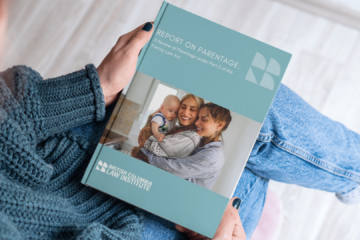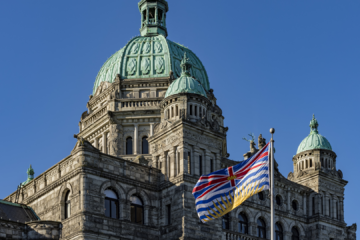BC Court of Appeal clarifies meaning of “habitable area” of a residential strata lot
November 30, 2017
BY Kevin Zakreski
In Barrett v The Owners, Strata Plan LMS3265, 2017 BCCA 414, the BC Court of Appeal allowed an appeal from a decision of a trial judge, affirming an earlier case’s conclusion that “ ‘habitable area’ means ‘that area within a residential strata lot which can, could or is capable of being lived in . . . free of serious defects that might harm health and safety.’ ” [Ellipsis in original.] Since “habitable area” is a key determinant of a residential strata lot’s unit entitlement, and since one of the main purposes of unit entitlement is, as the court noted, “[to govern] an owner’s proportionate share of the common expenses and liabilities of a strata corporation,” this decision will important to note in considering strata-corporation governance and finances.
The focal points of the case were basements and lofts included in most, but not all, strata lots. The strata property itself was an “80 strata lot residential development,” located in Surrey, and built in two phases (deposited in 1998 and 2000). Upon completion of construction, “59 of the strata lots had unfinished basements, 16 had crawl spaces and five had neither a basement nor a crawl space. Two of the strata lots with basements also had unfinished lofts above their garages.”
These unfinished areas weren’t included in the developer’s calculation of unit entitlement for the strata lots, a point noted in the developer’s disclosure statement. As time went on, “the basements and lofts in most, but not all, of the strata lots were finished, but the existing schedule [of unit entitlement] was not amended to reflect the improvements.” This resulted in an ongoing “[c]ontroversy” among strata-lot owners, with some feeling that the owners who had finished their basements and lofts were using their strata lots’ lower unit entitlements to shield themselves from paying their fair share of common expenses.
This controversy came “to a head” in 2015, when the strata corporation need to fund a roof-replacement project. The resolution approving the special levy for this project calculated each owner’s contribution “in accordance with the existing schedule of unit entitlement,” which didn’t include the basements and lofts.
Owners of six strata lots without basements or lofts launched these proceedings in response. The trial judge found “the schedule of unit entitlement [to be] inaccurate and s. 14.13(a) [of the Strata Property Regulation] inapplicable with respect to finished basements and lofts.” She ordered the schedule to be amended under section 246 (8) (a) of the act.
The court of appeal saw this case as turning largely on interpretation of statutory provisions (sections 70, 246, and 261 of the act and section 14.13 of the regulation) and the leading case (“[a]t its core, the appeal concerns the meaning of ‘habitable area’ and, in particular, whether the interpretation adopted by Justice Burnyeat in Fenwick v. Parks, 2004 BCSC 1132 (CanLII) and affirmed by the judge is correct”).
For the court, “the appeal turns, in large measure, on whether Fenwick was correctly decided.” And the court’s conclusion was, essentially, “yes”: “Justice Burnyeat applied the modern approach to statutory interpretation correctly in concluding that ‘habitable area’ means ‘that area within a residential strata lot which can, could or is capable of being lived in . . . free of serious defects that might harm health and safety.’ ” [Ellipsis in original.] The court also emphasized that this “broad interpretation [of “habitable area”] promoted the objects of the Strata Property Act and its predecessor legislation, namely, ensuring consistency, fairness and equity among strata lot owners.”
The relevance of this for the Barrett case was summed up in the court’s comment that:
the judge correctly affirmed the Court’s interpretation of s. 14.2 of the Regulation and the meaning of “habitable area” in Fenwick. However, in my view, she did not apply the Fenwick approach consistently in her interpretation of ss. 70, 246 and 261 of the Strata Property Act and s. 14.13(a) of the Regulation.
For the court of appeal, the concerns with the trial judge’s decision rested on her finding that habitable area “was not accurately reflected in the schedule of unit entitlement in two separate respects: i) finished basements and lofts were not included and ii) unfinished basements and lofts were not included.” The court concluded that these findings led the trial judge astray:
Given that the judge (correctly) found that the use, finishings and development of an area within a strata lot do not determine its habitability, it is unclear to me why she also found that different levels of finishings created separate inaccuracies in the habitable area reflected in the schedule. In my view, these two findings are inconsistent and the second is incorrect. For purposes of s. 14.13(a) and s. 246(7), the inaccuracy of significance could only relate to the “actual habitable area” of the strata lots. Finishings are irrelevant to this question. Accordingly, the relevant inaccuracy could only be the exclusion of basements and lofts from the calculation of “habitable area,” whether the Deer Run basements and lofts were finished or not. Put another way, there was only one possible inaccuracy for consideration—the exclusion of basement and loft areas—and that inaccuracy was contained in the schedule when it was deposited with the strata plan. In these circumstances, s. 14.13(a) applied.
These considerations led the court to its conclusion that the owner’s petition was barred by section 14.13 because any inaccuracies in the Schedule of Unit Entitlement were contained in the schedule at the time of the deposit of the strata plan in a land title office:
The plain meaning of the words of s. 70(4) is that a schedule must be amended if the habitable area of a strata lot is increased or decreased, not physically changed or improved. It does not refer to the area’s “designation.” In accordance with Fenwick, physical changes or improvements to an area within a strata lot that can be lived in do not affect its habitability because “habitable area” is determined without regard to its use, finishings or development. Accordingly, unless there is an error in the original schedule, an interior area that is physically changed or improved will already have been accounted for in the “habitable area” calculation and no amendment will be warranted. On the other hand, where a previously nonhabitable area, such as a garage or balcony, is incorporated into interior living space the actual habitable area of a strata lot is increased and an amendment will be reasonably required as a matter of fairness among owners. In my view, that is the type of change contemplated by ss. 70(4) and 261 of the Strata Property Act.
When the statutory scheme is interpreted in this way, its words are not strained or supplemented and concerns as to consistency, fairness and absurd results are largely ameliorated. Owners are not “insulated” by s. 14.13(a) from amendments driven by physical changes or improvement within a strata lot because amendments in response to such changes are not mandated by the statutory scheme. However, consistent with its legislative purpose, s. 14.13(a) does insulate owners from amendment of any inaccuracies in the actual habitable area of a strata lot that were contained in the original schedule. In contrast, any such errors arising thereafter may be amended by application under s. 246(7).
In the result, the appeal was allowed and the owners’ petition was dismissed.











































